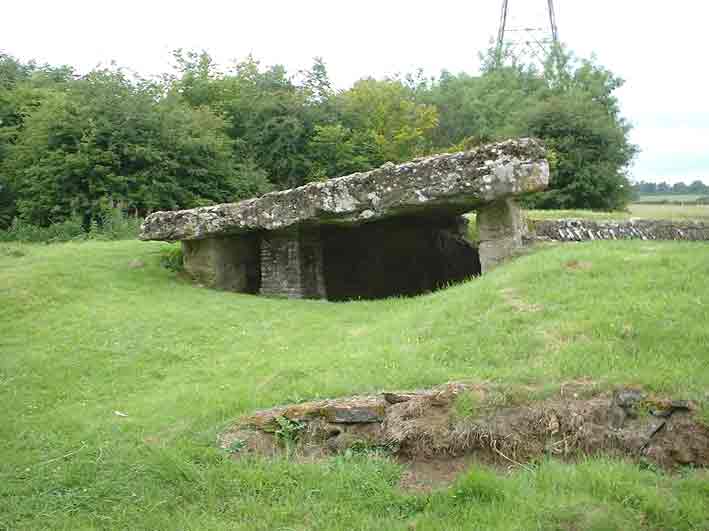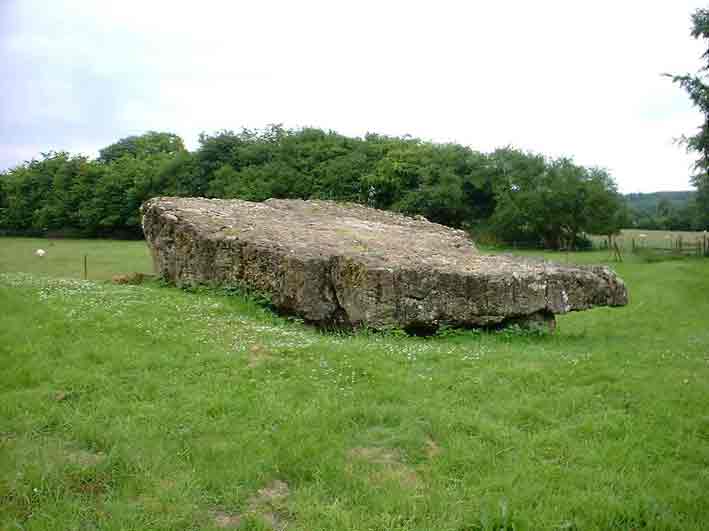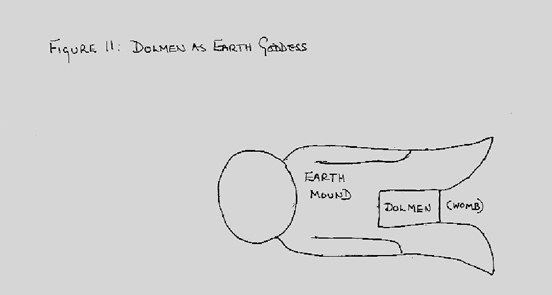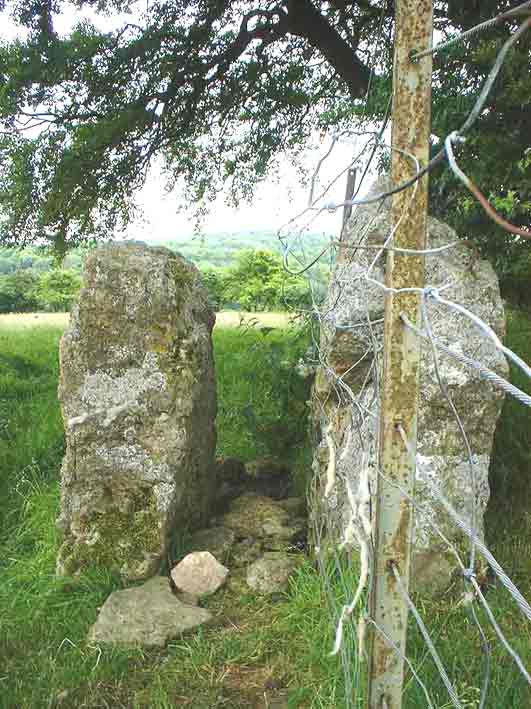
MORE DETAILS ABOUT THE TINKINSWOOD BURIAL CAIRN

The Tinkinswood Burial Cairn
The Tinkinswood Burial Cairn is a chambered ‘long cairn’ of the Severn Cotswold type. A ‘dolmen’ built of local limestone it consists of a large capstone, reputed to be the largest in Britain, supported by large upright stones.

Tinkinswood, The Giant Capstone
The capstone is estimated to weigh some 40-50 tonnes. Around and behind these is a covering mound of earth some 40 metres long by 18 metres wide. It is thought that such earth mounds, which would have extended over the capstone, were intended to represent the Earth Goddess, with the burial chamber itself representing a womb.

Sketch of Earth Goddess
The Cairn is oriented towards east north-east, approximately where the sun could be expected to rise on 1 May, although the rising ground in that direction obscures any view of the horizon. In folk-lore the Cairn is associated both with this day in and with Midsummer.
The Cairn was excavated in 1914 but nothing of significance was found. Some restoration work was undertaken, including the insertion of an unsightly brick pillar to help to support the capstone. The Cairn is now in the care of CADW, the government agency responsible for the upkeep of Welsh heritage sites and structures. CADW believe that structure to be some 6,000 years old; in other words that it was built a thousand years or so before Stonehenge and about 4,000 years before the Romans came to Britain.
The site itself lies roughly equidistant between Cardiff, Barry and Cowbridge in the Vale of Glamorgan, Wales, UK. The map reference is ST 094733.
From the Tinkinswood site two parallel lines of stones, now buried for the most part, form a long avenue to the southeast, stretching away from the burial chamber. The outline of where the avenue was can still just be made out today in the field that lies to the east of the site.
A second avenue, at right angles to the one above, is today marked by a thick hawthorn hedge beneath which many stones lie. This appears to be the line of midsummer sunrise. A large solitary stone stands due east of the Cairn, while two flat parallel standing stones point like a gunsight to the top of nearby Coed Sion Hill. This is clearly shown in the photograph below.

Tinkinswood: The ‘Gunsight’ Stones Point to the Summit of Coed Sion Hill
BACK: Home Page and Index